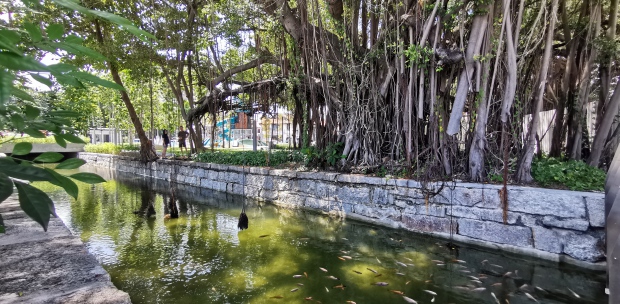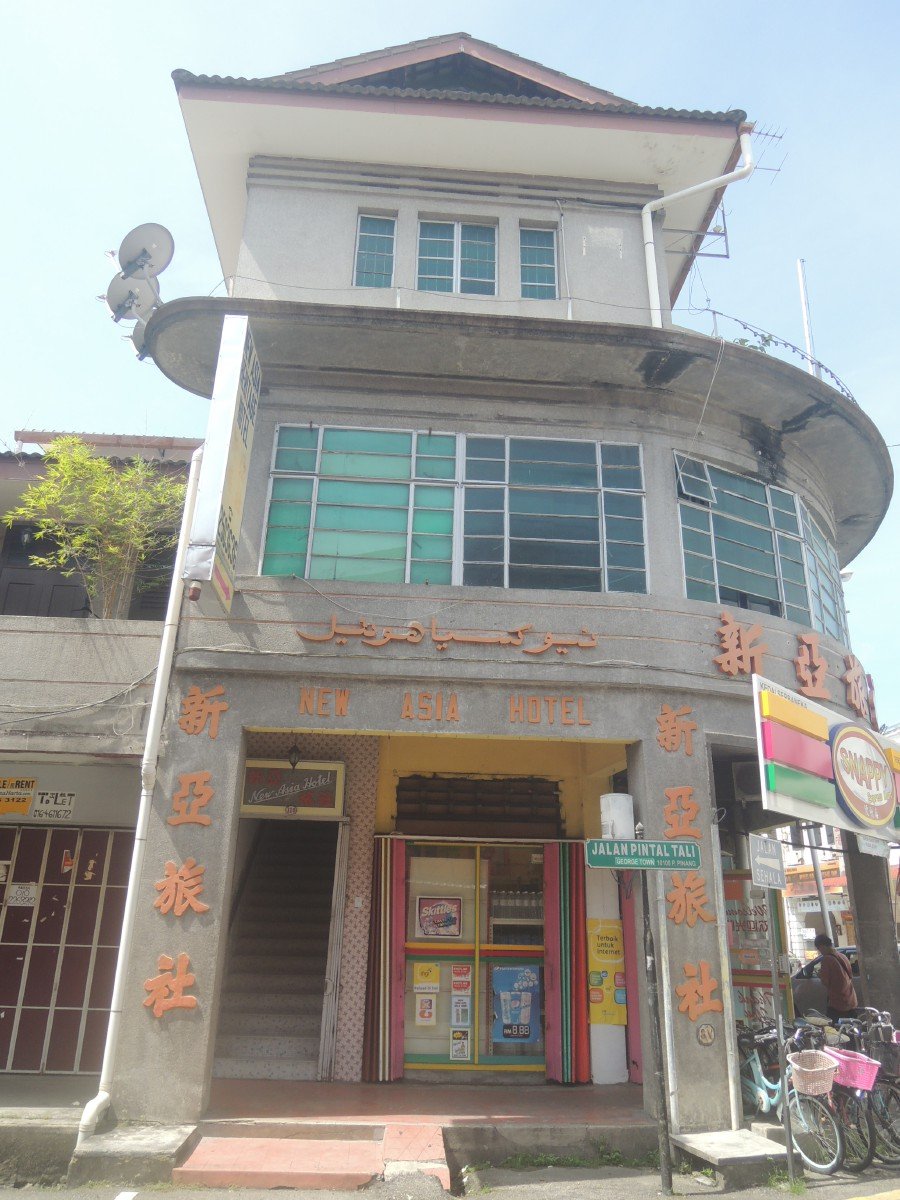
“DOCUMENTS! That vendor over there just pulled out a large bag of old documents!” my wife whispers excitedly into my ear just as I’m about to start sifting through a stack of old picture postcards. She waves her finger towards the opposing side of the narrow pathway filled with people. I look intently but fail to see the seller. The look on her face, however, tells me that something is afoot. Placing the stack of cards in her hands, I quickly head off in search of the elusive seller.
It’s only 4pm but the afternoon flea market at Padang Brown is already in full swing. Dozens of vendors start gathering at this spot in Penang’s bustling Dato Kramat area as soon as they’re done with lunch.
Suddenly, I catch sight of a large group crowding around a man standing beside a motorcycle. The seller keeps on dipping into a large gunny sack and placing rolls of paper into the outstretched hands of the buyers. I quicken my steps and join in the action, putting all I can get my hands on into a plastic bag. There’s no time to check anything. My aim is to secure as many things as possible and only check them when time permits.
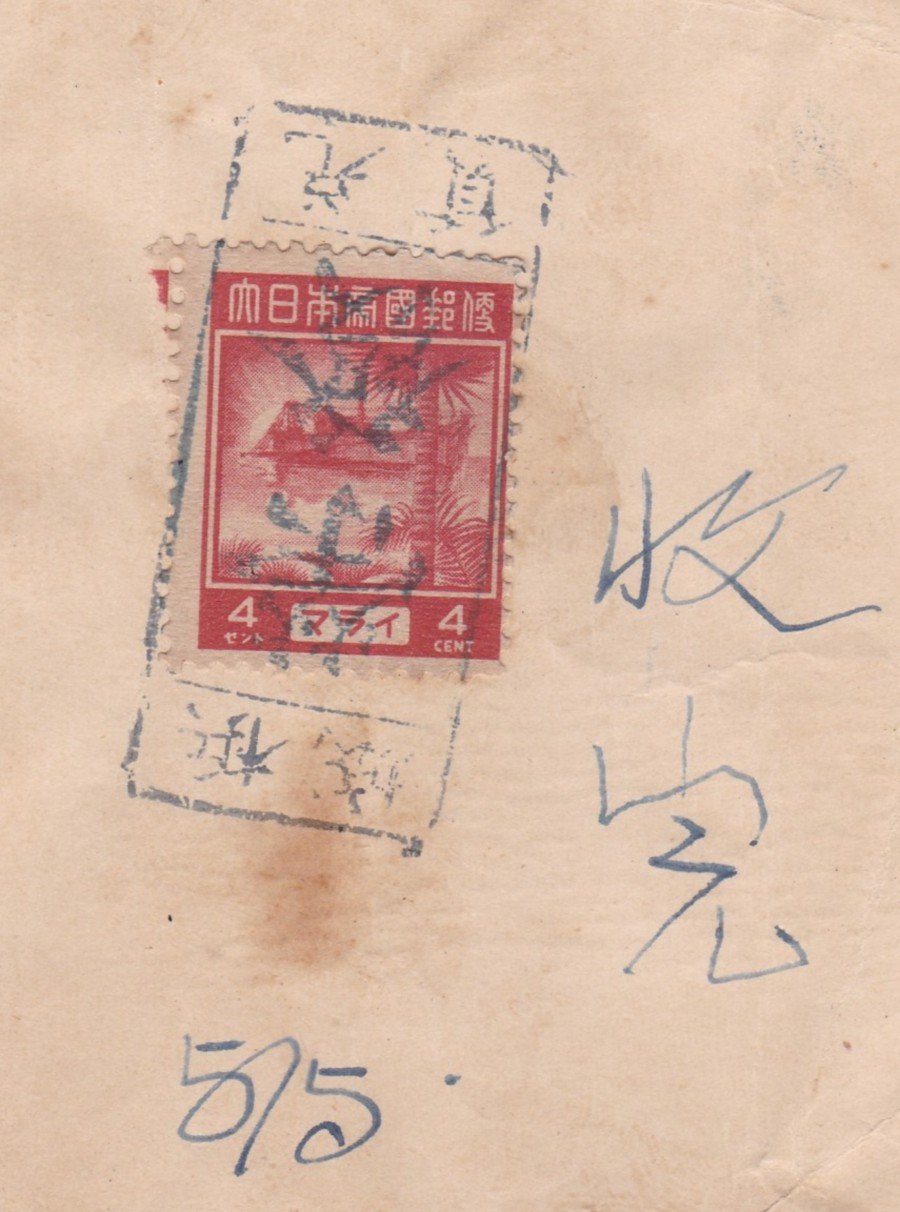
“Japanese Occupation!” These words keep ringing out as the buyers delightedly peek at their new found possessions. Tempers occasionally flare when some people start vying for the same items. Fortunately, they cool down when more appear from the seemingly bottomless bag.
Finally, the seller announces that the stack of envelopes in his right hand represents the last of the lot. I join the crowd in lunging forward with gusto. To my delight, my effort is richly rewarded when the envelopes are shoved into my waiting palm.
The crowd slowly thins, leaving the buyers to start paying the seller for their purchases. Soon my turn arrives and the seller merely peeks into my bulging plastic bag and holds it in his hands to make a rough estimation of its weight before quoting his price.
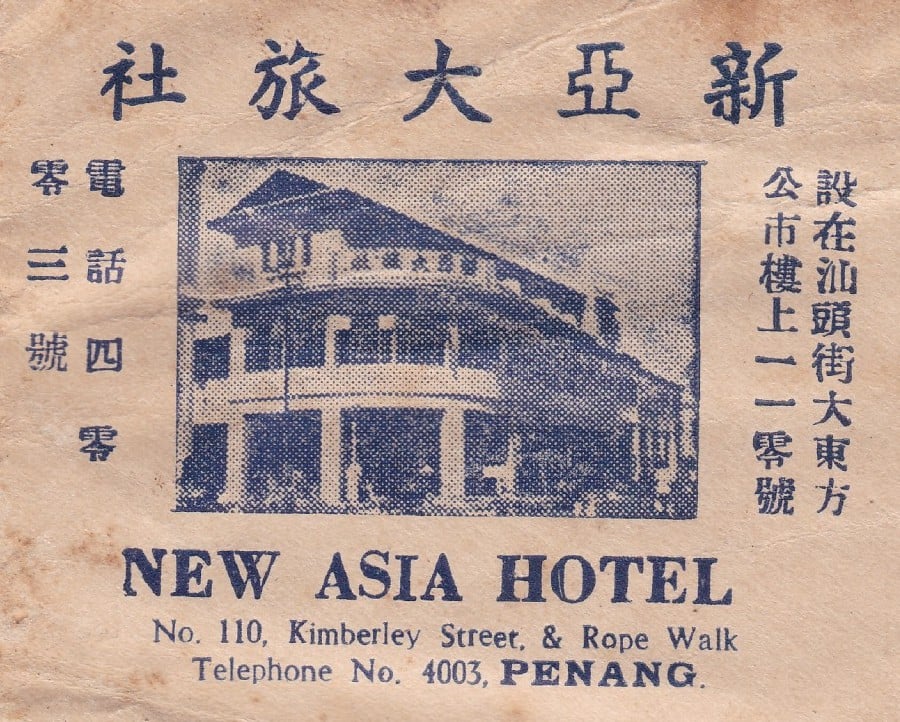
Checking the ‘loot’
Back in the car, my wife and I excitedly start going through the items. A lot of the stuff turns out to be rolled up rental receipts for New Asia Hotel located at the junction of Rope Walk (now Jalan Pintal Tali) and Lebuh Kimberley.
The dates on the receipts range from 1940 to 1945 and each receipt is affixed with a duly cancelled 4c stamp. That’s the correct tax rate for receipts back then. Apart from some Straits Settlement stamps, the bits of fragile paper mostly bear adhesives from the Japanese Occupation period.
Disappointment starts to creep as I unearth more common receipts. Then I decide to check the contents of the stack of envelopes. An avalanche of goodies start to appear. These include Japanese Occupation era lotteries tickets, photographs, letters, newspaper cuttings, bank fixed deposit statements and a small number of early luggage labels produced by the hotel.
A myriad of questions start surfacing as soon as I reach the end of the pile. “Does this hotel still exist today? Could there be more of these priceless items in the storeroom waiting to be discovered?” I ask myself. That feeling of wanting to make a quick drive to the address to find out more begins to nag. In my heart I harbour the hope of meeting the owner and, with some luck, learn his story.

Tracking the story
The George Town traffic is surprisingly light for a late Thursday afternoon. I can barely contain my excitement and before long, I spot the New Asia Hotel signboard. My first question has already been answered. “This is a good sign. Hopefully we’ll get to meet the owner,” I tell my wife as we start walking up the flight of stairs leading to the reception area on the first floor.
My hopes are dashed a few minutes later as I learn from the manager on duty that his company had taken over management of the hotel about seven years ago when the previous owner decided to call it a day.
“We don’t have any of the old records. Everything was cleared out by the previous owner before we took over. We did some minor renovations in 2010 but as far as I can remember we didn’t find anything related to the hotel’s past,” she explains when I show her the things I’d bought. My request to contact the former owner draws a blank as well.
My only consolation is her generous permission to look around the place. Looking out at the bustling junction down below through an open window, I can just imagine the sight that must have greeted Penangites when the triumphant Japanese soldiers, astride their tanks, rumbled for the first time into town. The minds of the people at that time must have been fraught with concern, fearful of their bleak future under the aggressors from the Land of the Rising Sun.

Reign of the Japanese
The Japanese Military Administration in Penang began on Dec 17, 1941. Right from the start, the Chinese community was singled out to bear the brunt of their oppression. This was their way of getting back at the locals for supporting the war effort back in China ever since the Japanese Army started their incursions there in 1937.
One of the most potent measures used by the Japanese to intimidate the Chinese was summary execution by beheading. In just a few days after the occupation, severed heads were placed at key intersections all over George Town. This action, apart from eliminating the people who are most likely to cause trouble, undoubtedly had a salutary effect on the rest of the population.
Referring to the newspaper cuttings of the Penang Shimbun, a local Japanese-controlled daily, I learn that the Japanese secret police or Kempeitai began detaining Chinese community leaders who’d been actively supporting the Chungking government and the China Relief Fund. Apart from that, mass investigations of the entire Chinese population were conducted with the sole purpose of ‘purification by elimination’.
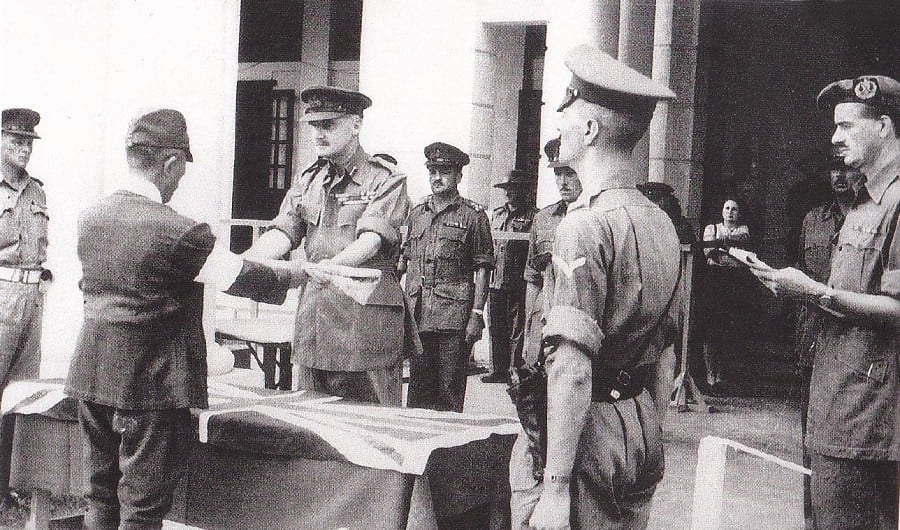
On April 5, 1942, the people were told to gather at various centres throughout George Town. Screenings were conducted with the help of masked informers who identified people according to four categories: those who’d worked against Japan, communists, educated individuals and criminals.
As many as 5,000 suspects, of whom a large majority consisted of young and middle aged men, were taken to prison while awaiting further interrogation. A fraction was subsequently released while the rest either died of cholera in the overcrowded cells or were spirited away by the truckloads for execution at deserted beaches on the island.
Apart from physical hardship and mental agony, the local population also suffered when the Japanese authorities froze all their pre-war bank accounts, bringing the local economy to a near standstill. The people were ordered to open new accounts in Japanese-controlled financial institutions like the Yokohama Specie Bank, Bank of Taiwan and the Japanese Konan Bank. The banks only received lukewarm response as the Chinese were unwilling to transact business with the Japanese banks.
Left with no choice, the Japanese authorities ordered the Chinese and Indian banks to resume operations. The Overseas Chinese Banking Corporation, United Chinese Bank, Ban Hin Lee Bank and Lee Wah Bank re-opened in April 1942. The list increased when Southern Bank and Kwong Yik Bank threw their doors open several months later.
All the Japanese and local banks resorted to lotteries and bonuses in the race to attract depositors. The lotteries I found were primarily issued by a branch of the Japanese Konan Bank. A total of 500,000 tickets were produced for each draw. The lottery tickets, at $1 each, gave purchasers the hope of winning the first prize money, which was $50,000. The instructions at the back required winning ticket holders to redeem their prizes at the Yokohama Specie Bank or its authorised branches.
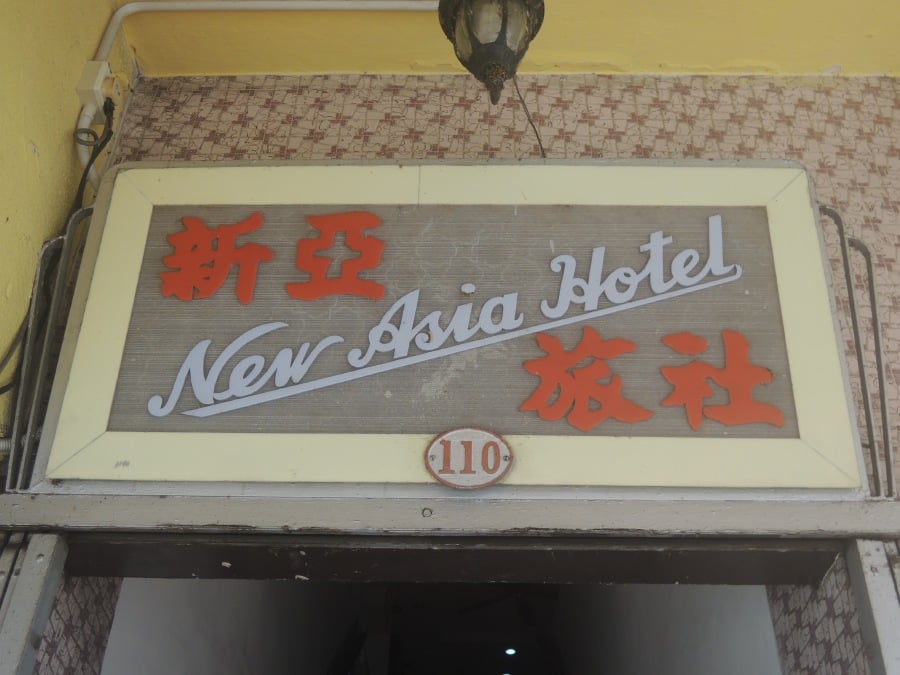
The fixed deposit receipts that I found were of exceptionally large sums of money. Upon close inspection, I notice that the majority of the notes were due in 1946, a year after the Japanese Occupation ended. The owner must have lost a fortune as the British demonetised all war time currency when they returned to Penang!
The tides of war began to slowly turn against the Japanese as early as November 1944 when Allied bombers began appearing over Penang and initiated bombing runs on important installations.
This prompted the jittery shopkeepers in Penang to close their shops in anticipation of further attacks. The Penang Shimbun reported on Nov 15, 1944 that the head of the Kempeitai issued warnings to shopkeepers telling them that premises which fail to open would be sealed for an indefinite period of time.
An attack on Jan 11, 1945 destroyed government buildings, the post office and important structures near the waterfront. A day after a massive raid on Feb 1, the entire George Town fell silent. Many of its residents opted to either remain indoors or flee for the suburbs where they were less likely to be hit.
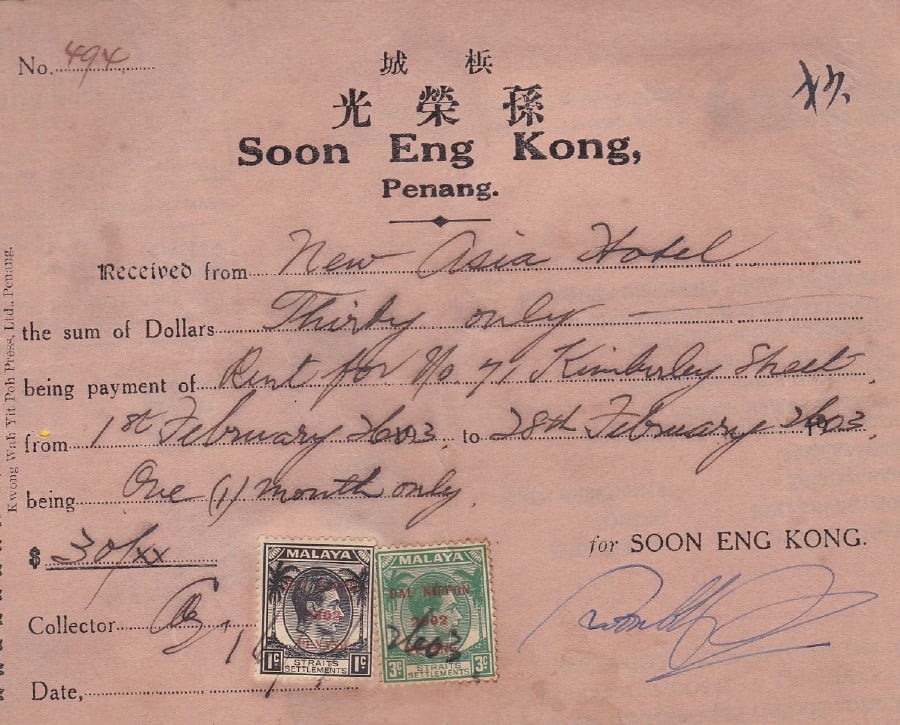
End of the war
Japan finally surrendered on Aug 15, 1945. British naval forces left their base in Sri Lanka’s Trincomalee port for Penang that very same day while the swifter minesweepers left Colombo three days later to clear the Melaka Straits. The naval flotilla planned to arrive in Penang on Aug 21. However, just before reaching Malayan waters, the Commander on board received instructions to delay his arrival to allow time for the surrendering Japanese commanders to effectively disseminate their cease-fire orders.
The British finally arrived in Penang on Sept 3 but they were forced to delay their landing for a further 24 hours when the local Japanese commander requested for more time to evacuate his forces to the mainland. A formal re-occupation ceremony took place on Swettenham Pier on Sept 5, 1945.
My last document dates to just a few days before this momentous ceremony took place. The previous owner of the hotel must have been relieved to learn that the war had finally ended. The return of the Allied forces must have given him the security to dispense with further record keeping.
As for me, I’m glad to possess a tiny slice of our nation’s history that will remind me of a time when peace was a just a distant memory.
The atrocities suffered during the Japanese Occupation serve as a grim reminder to all of us to treasure the peaceful way of life that we enjoy now. Let us all pray that our wonderful nation will never have to witness such terror again.


